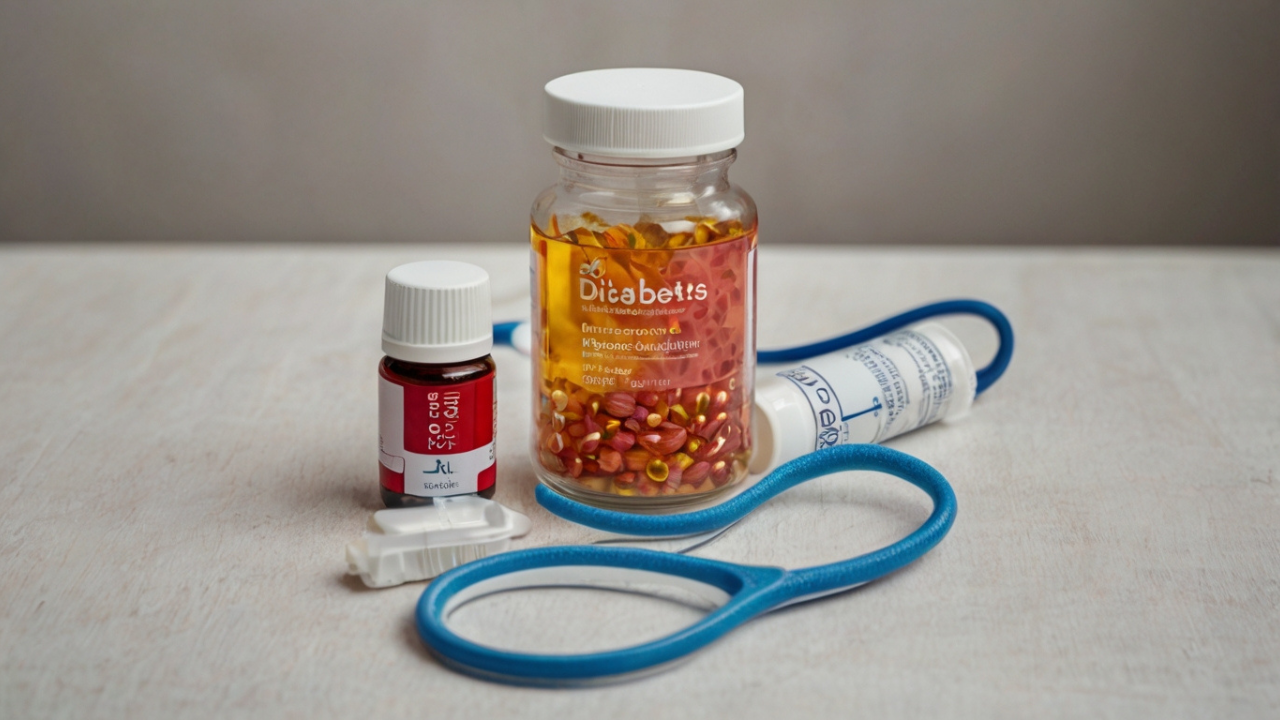Diabetes is Most Accurately Defined As Key Facts and Information
Diabetes is a complex and multifaceted condition that affects millions of people worldwide. Understanding the intricacies of diabetes, including its types, symptoms, and treatment options, is crucial for both patients and healthcare providers. This article delves into the essential aspects of diabetes, providing a comprehensive guide to its definition, types, management, and more.
Introduction
Diabetes is a chronic health condition that requires ongoing medical attention and self-management. With over 34 million people diagnosed in the United States alone, diabetes is not just a national health issue but a global concern. This article will cover the different types of diabetes, the symptoms, treatments, and advancements in managing this condition.
What is Diabetes?
Definition
Diabetes is a group of diseases characterized by high blood sugar levels over a prolonged period. The condition arises when the body either does not produce enough insulin or cannot effectively use the insulin it does produce.
Types of Diabetes
There are primarily three types of diabetes: Type 1, Type 2, and gestational diabetes. While Type 2 diabetes is frequently associated with lifestyle factors and insulin resistance, Type 1 diabetes is an autoimmune condition in which the body attacks cells that produce insulin. Pregnancy causes gestational diabetes, which typically goes away after giving birth.
Type 1 Diabetes
Causes and Risk Factors
Type 1 diabetes is primarily caused by an autoimmune response where the body mistakenly attacks its pancreatic cells that produce insulin. Genetics plays a significant role, but environmental factors like viruses may also contribute.
Symptoms
Common symptoms include frequent urination, extreme thirst, fatigue, and unintentional weight loss. These symptoms can appear suddenly and need to be treated right away.
Treatment Options
Managing Type 1 diabetes involves regular insulin injections or an insulin pump, alongside careful monitoring of blood sugar levels. Patients also need to maintain a balanced diet and engage in regular physical activity.
Type 2 Diabetes
Causes and Risk Factors
Poor diet, obesity, and inactivity are frequently linked to type 2 diabetes. Insulin resistance, or the body’s cells’ ineffective response to insulin, defines it.
Symptoms
Symptoms of Type 2 diabetes include increased hunger, frequent urination, blurred vision, and slow-healing sores. These symptoms often develop gradually.
Treatment Options
Treatment typically starts with lifestyle changes like diet and exercise, but may also include oral medications, insulin therapy, or other injectable medications like Trulicity.
Prediabetes
Definition and Symptoms
Blood sugar values above normal but not high enough to be called Type 2 diabetes are referred to as prediabetes.
Importance of Early Detection
Early detection of prediabetes is crucial as it provides an opportunity to make lifestyle changes that can prevent the onset of Type 2 diabetes.
Blood Sugar Levels and Glucose Monitoring
Normal vs. Abnormal Levels
Normal blood sugar levels are typically between 70-99 mg/dL when fasting and less than 140 mg/dL two hours after eating. Abnormal levels, especially when consistently high, indicate diabetes or prediabetes.
Tools for Monitoring
Glucose levels can be monitored using traditional blood glucose meters or continuous glucose monitors like the Dexcom 7, which provides real-time data and alerts.
Insulin and Its Role in Diabetes
Types of Insulin
Insulin comes in several forms: rapid-acting, short-acting, intermediate-acting, and long-acting. Each type has specific uses depending on the patient’s needs.
Insulin Pumps and Other Delivery Methods
Insulin pumps deliver continuous insulin throughout the day, mimicking the body’s natural insulin release. They are often used by patients who require more precise control over their blood sugar levels.
Trulicity: A New Frontier in Diabetes Management
What is Trulicity?
Trulicity is a once-weekly injectable medication that helps control blood sugar in adults with Type 2 diabetes. It works by stimulating insulin secretion and slowing down digestion, which helps maintain stable blood sugar levels.
How it Works
Trulicity mimics the effects of the hormone GLP-1, which is naturally produced in the intestines. It enhances insulin release when blood sugar levels are high and reduces the amount of glucose produced by the liver.
Benefits and Side Effects
The benefits of Trulicity include improved blood sugar control and a reduced risk of cardiovascular events. Common side effects include nausea, diarrhea, and abdominal pain, but these often subside after the first few doses.
Farxiga Side Effects: What You Need to Know
Overview of Farxiga
Farxiga is an oral medication used to treat Type 2 diabetes. It belongs to a class of drugs called SGLT2 inhibitors, which help lower blood sugar by preventing the kidneys from reabsorbing glucose.
Common Side Effects
Common side effects of Farxiga include urinary tract infections, genital infections, and increased urination. In some cases, it may cause dehydration or lead to a drop in blood pressure.
Managing Side Effects
Patients taking Farxiga should stay hydrated and monitor their blood pressure regularly. Reporting any unusual symptoms right away to a healthcare provider is advised.
Toujeo and Lantus Insulin: A Comparative Analysis
Overview of Toujeo Insulin
Toujeo is a long-acting insulin that provides steady blood sugar control for up to 24 hours. It is typically used once a day to help manage blood sugar levels in adults with diabetes.
Overview of Lantus Insulin
Lantus is another long-acting insulin, similar to Toujeo, but with a slightly different formulation. It is also used once daily to maintain stable blood sugar levels.
Comparison of Efficacy and Safety
Both Toujeo and Lantus are effective in controlling blood sugar levels, but Toujeo may offer a slightly lower risk of hypoglycemia. The choice between the two often depends on patient preference and specific medical needs.
The Role of an Endocrinologist in Diabetes Management
When to See an Endocrinologist
An endocrinologist is a specialist in hormone-related conditions, including diabetes. Patients with complex or poorly controlled diabetes should consider seeing an endocrinologist for specialized care.
How They Help Manage Diabetes
Endocrinologists help manage diabetes by tailoring treatment plans, monitoring complications, and providing education on the latest treatments and technologies.
Complications of Diabetes
Macular Edema
One eye-related complication of diabetes is macular edema.. It occurs when fluid builds up in the macula, the part of the eye responsible for sharp vision, leading to vision loss if not treated.
Neuropathy
One kind of nerve damage that diabetics may experience is diabetic neuropathy.. It often affects the legs and feet, causing pain, tingling, and loss of sensation.
Cardiovascular Issues
Diabetes significantly increases the risk of cardiovascular diseases, including heart attack, stroke, and atherosclerosis. Managing blood sugar levels, along with blood pressure and cholesterol, is crucial to reducing this risk.
The Importance of Getting Real About Diabetes
Breaking Myths and Misconceptions
There are many myths and misconceptions about diabetes, such as the idea that it is caused solely by eating too much sugar. It is important to educate the public about the real causes, symptoms, and treatments of diabetes.
Encouraging Open Dialogue
Open dialogue about diabetes can help reduce stigma and encourage more people to seek the care they need. Public awareness campaigns and community support groups play a vital role in this effort.
Future Outlook: Emerging Treatments and Technologies
Advances in Insulin Pumps and Glucose Monitoring
New technologies, like the Dexcom 7 continuous glucose monitor and advanced insulin pumps, are making diabetes management more precise and less burdensome for patients.
Potential Cures on the Horizon
Research into potential cures for diabetes, such as pancreas transplants and stem cell therapy, is ongoing. While these treatments are still in the experimental stages, they offer hope for a future where diabetes can be cured or significantly reduced.
FAQs About Diabetes
What is the most accurate definition of diabetes?
Diabetes is a chronic condition characterized by high levels of glucose in the blood due to the body’s inability to produce or properly use insulin.
What are the symptoms of Type 2 diabetes?
Increased thirst, frequent urination, exhaustion, blurred vision, and sores that heal slowly are typical symptoms.
How does Trulicity help in managing diabetes?
Trulicity helps by stimulating insulin secretion and slowing down digestion, which helps maintain stable blood sugar levels.
What are the side effects of Farxiga?
Common side effects include urinary tract infections, genital infections, increased urination, dehydration, and low blood pressure.
When should I see an endocrinologist for diabetes?
You should see an endocrinologist if your diabetes is complex, difficult to control, or if you have complications that require specialized care.
Conclusion
Diabetes is a condition that requires careful management and a deep understanding of its various aspects. From understanding the different types of diabetes to knowing the latest treatments like Trulicity and Farxiga, staying informed is key to effective management. As research continues to advance, there is hope for even better treatments and possibly a cure in the future.

